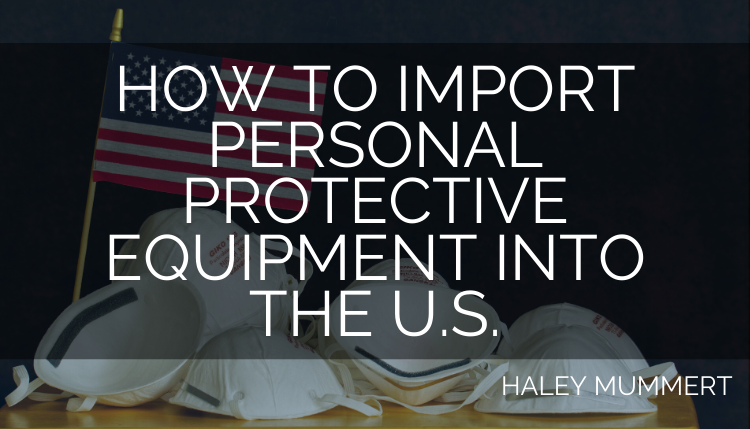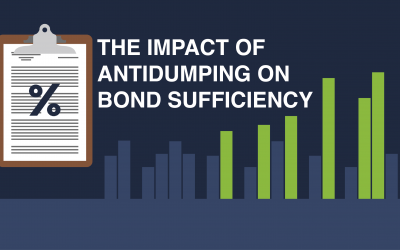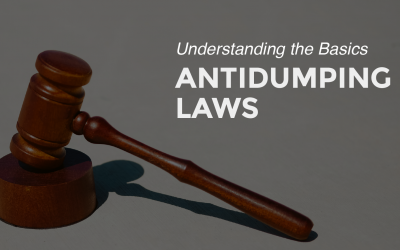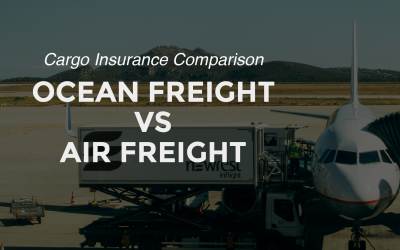The COVID-19 pandemic has driven a demand for personal protective equipment (PPE) for both healthcare professionals and the general public. For U.S. importers to avoid challenges and risks associated with the importation of PPE, there are essential details they need to know.
FDA Approval for Importing Personal Protective Equipment
The FDA has loosened import restrictions to quickly move imported personal protective equipment to the healthcare professionals who need it.
Many importers that are new to importing these commodities are concerned about manufacturers’ formal certification to sell PPE and medical gear. While experienced buyers go are ready to deeper into their due diligence since they know what the conditions are for the certificates to be granted, and request more information.
To be granted access to the U.S. market by the FDA, the manufacturer must maintain a quality management system that includes compliance with good manufacturing practices. The requirements can be viewed online.
Depending on what type of PPE being imported, Importers may be subject to reporting requirements as an importer of medical devices. Current FDA regulatory regimes are evolving rapidly, given the scope of the COVID-19 pandemic.
The Importance of Data Quality on Personal Protective Equipment Imports
Providing accurate and descriptive information can help expedite the importation process in several ways.
To make a declaration, importers will be asked to supply:
- Photos of the product
- Proof of certification by a governing body
- Product specifications
- Source of the product
- Destination of the product
Data elements importers should prepare:
- Commercial Description
- Manufacturer
- Shipper
- This can typically be determined from the freight bill or bill of lading.
- The FDA Shipper may be the same entity as the invoicing party.
- FDA Importer
- This is a company or individual in the United States that is an owner, consignee, or recipient, even if not the initially, of the PPE product imported into the U.S.
- Device Initial Importer
- FDA Country of Origin
- FDA Product Code
- Surgical masks (FXX)
- Surgical masks with antimicrobial/antiviral agent (OUK)
- Pediatric/child facemasks (OXZ)
- Surgical gowns (FYA)
- Isolation gowns and surgical apparel accessories (FYC, LYU, OEA)
- Surgical suits (FXO)
- Tariff Code/Tariff Classification
- Surgical masks and N95 respirators fall under tariff classification 6307.90.9889.
- Quantity
- Value
- Consignee
- FDA Facility Registration number
- Affirmation of Compliance codes and qualifiers
- Premarket Application
Shipping Personal Protective Equipment Internationally
Logistics companies are overstretched, especially in the air freight market, which has seen a massive cut in their capacity with the cancellation of most passenger flights, which formerly carried half of all air cargo. Air carriers will currently accept bookings, but deliveries might be substantially delayed.
While ocean carriers are sailing on modified schedules, they can accept bookings. The shipment could take three to four weeks, which may be far too long to meet the immediate need for PPE.
Supply contracts with specific delivery deadline terms may be at risk for timely performance. Carriers may charge premium freight rates for priority delivery.
Well-established logistics companies generally have long-standing relationships with CBP or other nations’ customs services. They are likely to be certified under CBP’s Customs-Trade Partnership Against Terrorism (C-TPAT) program. When choosing a logistics company, it is advisable to choose one that is C-TPAT certified to expedite clearance by CBP.
Insurance For Personal Protective Equipment
For ocean shipments, the ocean carrier may limit its liability for loss or damage to goods unless caused by certain circumstances. Ocean carriers may extend this limit per package to subcontractors, including truckers, railroads, marine terminals, or warehouses.
This limit may apply to an individually packaged item, a carton of goods, a pallet with multiple cartons, or the marine container itself.
Ocean shippers may avoid this limitation by “declaring higher value” and paying the carrier for all-risk marine cargo insurance. Air cargo carriers could limit liability, and air cargo shippers may obtain insurance in higher amounts.
Regulations for Customs Duties on Personal Protective Equipment
Customs must know who will be the importer of record, who is filing the customs paperwork, what the proper customs classifications are, what the tariff rate is, and who is responsible for paying the tariffs.
Organizations experiencing financial hardship may be eligible for 90-day Duty Deferral. If eligible, duties, taxes, and fees for goods entered in March or April 2020 can be deferred for 90 days from the date that the deposit would have been due.
Section 301 duties have been suspended for certain items in response to the pandemic. It is essential to know what duties might be applied before the goods arrive. Importers should use the tariff code 9903.88.42 to claim this exclusion.
Other issues that might get the goods detained by CBP include whether the goods infringe upon U.S. intellectual property rights and whether the goods face any other import restrictions like antidumping and countervailing duties.
Proper Importation of Personal Protective Equipment
The FDA had provided step-by-step instructions on how to register and list imported personal protective equipment. Failure to properly import FDA-regulated medical devices could result in seizure of the shipment, penalties of up to $15,000 per violation, or even criminal prosecution. This is in addition to penalties that CBP may impose for violating regulations on the entry of goods.
Watch This Video to Discover What Importers Need to Know About Importing PPE
This video discusses the fundamental details associated with importing PPE into the United States that have been updated to address the COVID-19 outbreak.
